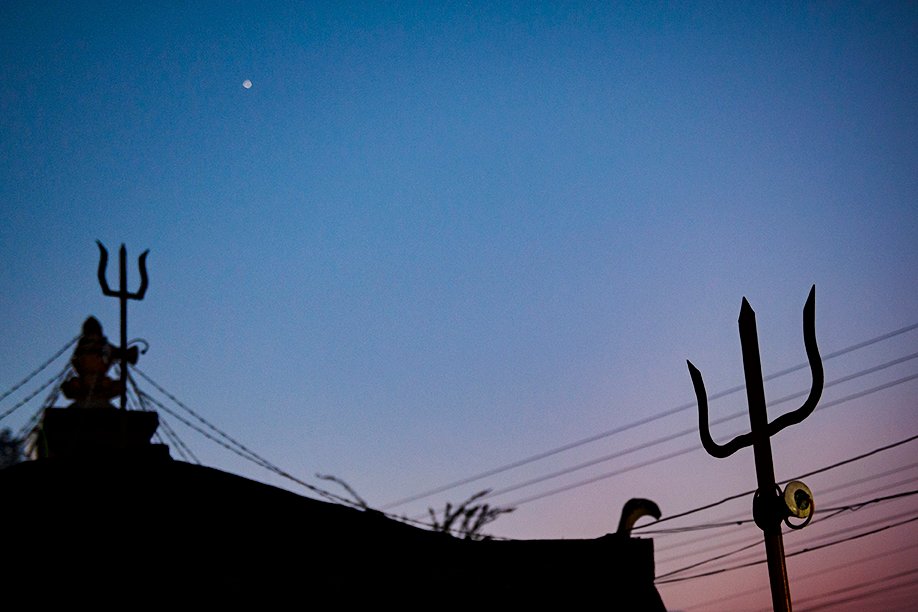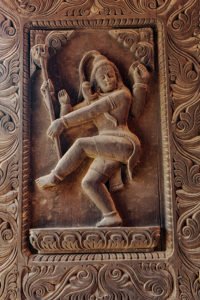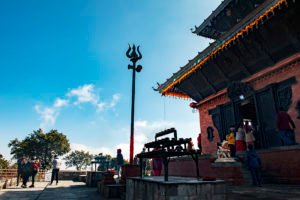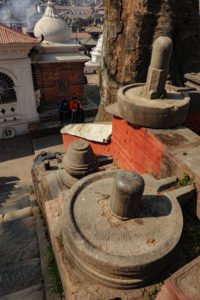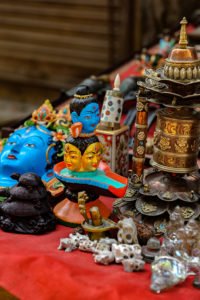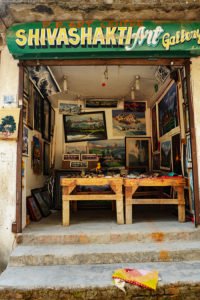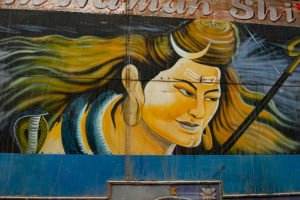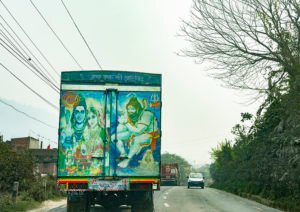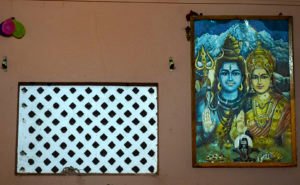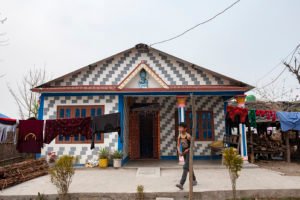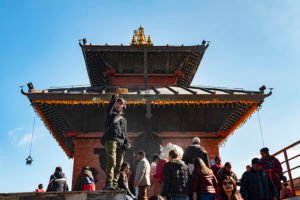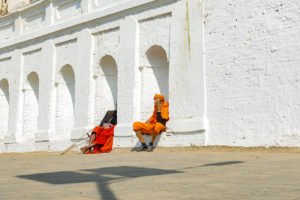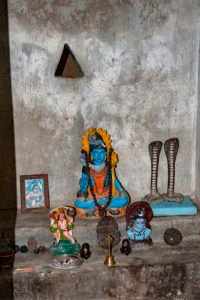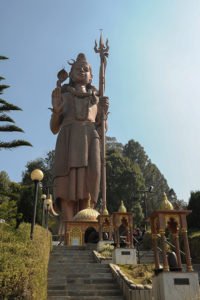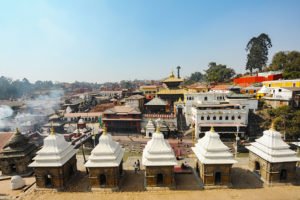His ‘floating hair and flashing eyes’ have always fascinated me. I went in search of Him in some known and unknown nooks and corners of Nepal, the land of the ‘Lord of animals’ – the Pashupati. Pashupati is an incarnation of Lord Shiva. He is depicted with 5 faces, symbolising the different avatars of Shiva, facing north, south, east, west and zenith.
Like the crescent moon atop His matted hair, my camera caught a slice of His omnipresent symbols and faces that I have tried to bring to you in the form of a photo essay.
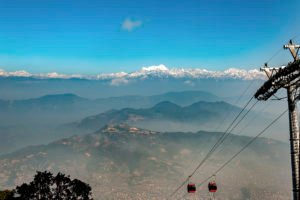
Himalayas from Chandragiri Hill. The entire range from the Annapurna to the Everest can be viewed from here
In the lap of the mighty Himalayas, the abode of snow. Lord Shiva is said to reside on Mount Kailasha, with his consort Parvati.
The images of Nataraj, depicting his dance of creation, preservation and dissolution has a mesmerizing effect on the beholder.
The trishul or trident of Pashupatinath represents various trinities, like creation, preservation and destruction. The snake Vasuki, that Shiva has around his neck, is the King of Serpents and was used in the churning of the ocean. Many of the trucks on the highways of Nepal have artwork representing Shiva and his emblems.
Shiva had performed the cosmic Tandava dance with his trishul and damaru or two-headed drum. The trishul, with the damaru, is the most powerful weapon of the universe and is known to have spiritual sounds. Legend says that the Sanskrit language was recognized by the drumbeats of the damaru. The Bhaleshwor Mahadev temple is believed to have been erected where Sati’s forehead (‘Bhala’) had fallen.
The Shivalinga is the abstract omnipotent form of the lord that symbolizes the union of the male (Purush) and the female (Prakriti) powers of Nature.
Innovative depiction of the Shivalinga for commercial purposes.
Artistic creations with the blessings of Lord Shiva.
It is said that the chanting of Om Namah Shivaya reduces high blood pressure. Maybe these images help keep one’s blood pressure in control on journeys through potholed and polluted roads.
It is hard to think of Lord Shiva without his consort Parvati and weed. Truck art like this keeps one’s spirits high. Maha Shivratri is one day of the year when everyone is allowed to smoke weed in Nepal.
Shiva and Parvati in more domestic surroundings.
The Lord at the entrance of a house, blessing all those who enter.
A selfie with Shiva. Even the gods have to go digital. Incidentally, the latest Nepali film in town is called ‘Selfie King’.
The sadhus are not into selfies, though. Some of them will allow a camera click against payment. No posing for free.
Idols of Lord Shiva and his snakes can be found in small neighbourhood temples, all over Nepal. The two most worshipped Hindu gods in Nepal are Lord Shiva and Lord Ganesh.
Built in 2010, the tallest Shiva idol in Asia is Kailashnath Mahadev in Sanga. The idol is 108 feet high and with the pedestal it measures 142 feet.
The UNESCO Heritage site of the ancient temple of Pashupatinath, on the banks of the river Bagmati, is more than 2000 years old. It is built in the Nepali Pagoda style of architecture. There are 559 Shiva shrines and temples in the premises.

